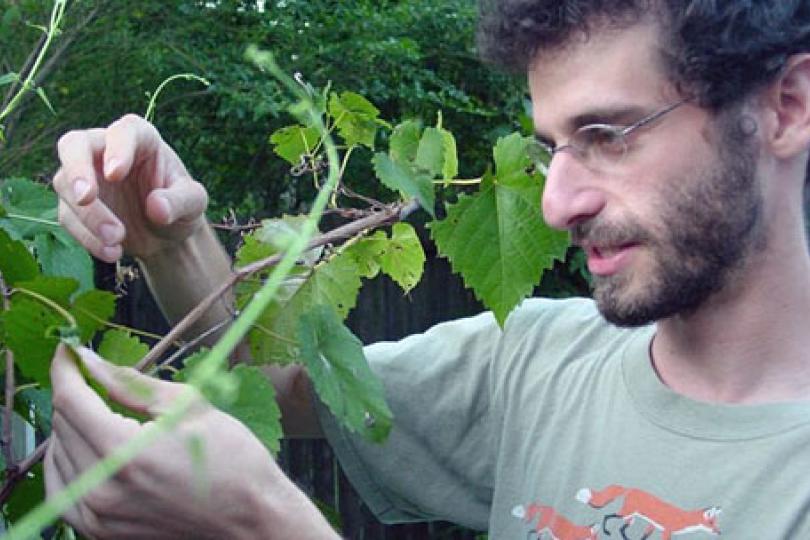Looking for bugs from a bench in Middlesex Fells
Editor's Note: This article was originally published on The Boston Globe website. You can see more of Noah's videos and buy his field guide at his website, NorthernNaturalists.com.
by Carolyn Y. Johnson / Globe Staff
Naturalist Noah Charney can’t go anywhere without noticing things. I’ve been friends with him for more than a decade, and I’ve always thought more people should benefit from his quirky enthusiasm and his knack for explaining things no one ever realized they wanted to know until he brought them up.
A few years ago, in his spare time, Noah and some like-minded friends and biologists started shooting videos in which he visits a place as ordinary as his front yard and starts sharing his wonder. He points out the paths left behind by earthworms or slugs, and spins fantastic tales about a fungus that infects cellar spiders and then, to infect other spiders, pops out of their leg joints and “makes this crazy marshmallow pom-pom fuzz,” to quote Noah directly.
In his latest three-minute video installment, about finding bugs where no one else is looking, Noah dropped down on a park bench at the Middlesex Fells on his way to the airport to do some field work in the Pacific Northwest. In rapid-fire fashion, he introduces us to kleptoparasitic cobweb spiders, which lay their eggs in other spiders’ webs—allowing their young to steal other spiders’ prey. Then he introduces viewers to a game that he and his collaborator developed when they got bored driving around the country—at every stop, find a green lacewing egg in the area.
Noah is eccentric, to be sure—discovering green lacewing eggs isn’t every person’s idea of fun. He lives in western Massachusetts, teaches at Hampshire College, and does field studies in spots around the world. A few years ago, he and his colleague Charley Eiseman wrote a hefty field guide for decoding the signs insects leave behind in the environment. It isn’t a standard book that tells you which bugs are which, but one that helps identify their tracks and signs—turning a serrated hole on the edge of a leaf or a pattern in the dirt into valuable information about what kinds of critters have been there and what they’re up to.
Charney delights in the creepy-crawly things that many people like to avoid. But his enthusiasm and his slapstick antics can be infectious, and his eccentricities are legend among my college friends. He’s the kind of person who will, when sternly told he has to wear shoes when he leads a group of freshmen on a backpacking trip, fashion a pair of duct tape sandals and wear them with glee. For as long as I’ve known him, he’s used his freezer as temporary storage for specimens he collected while wandering around.
Noah makes people laugh—it’s almost always entertaining to find out the extreme and bizarre lengths he went to in order to observe some animal or find an insect. But there’s also envy there, about how rich his attention is, and how blind we all are until he brings the camera in close to show us something ordinary.

